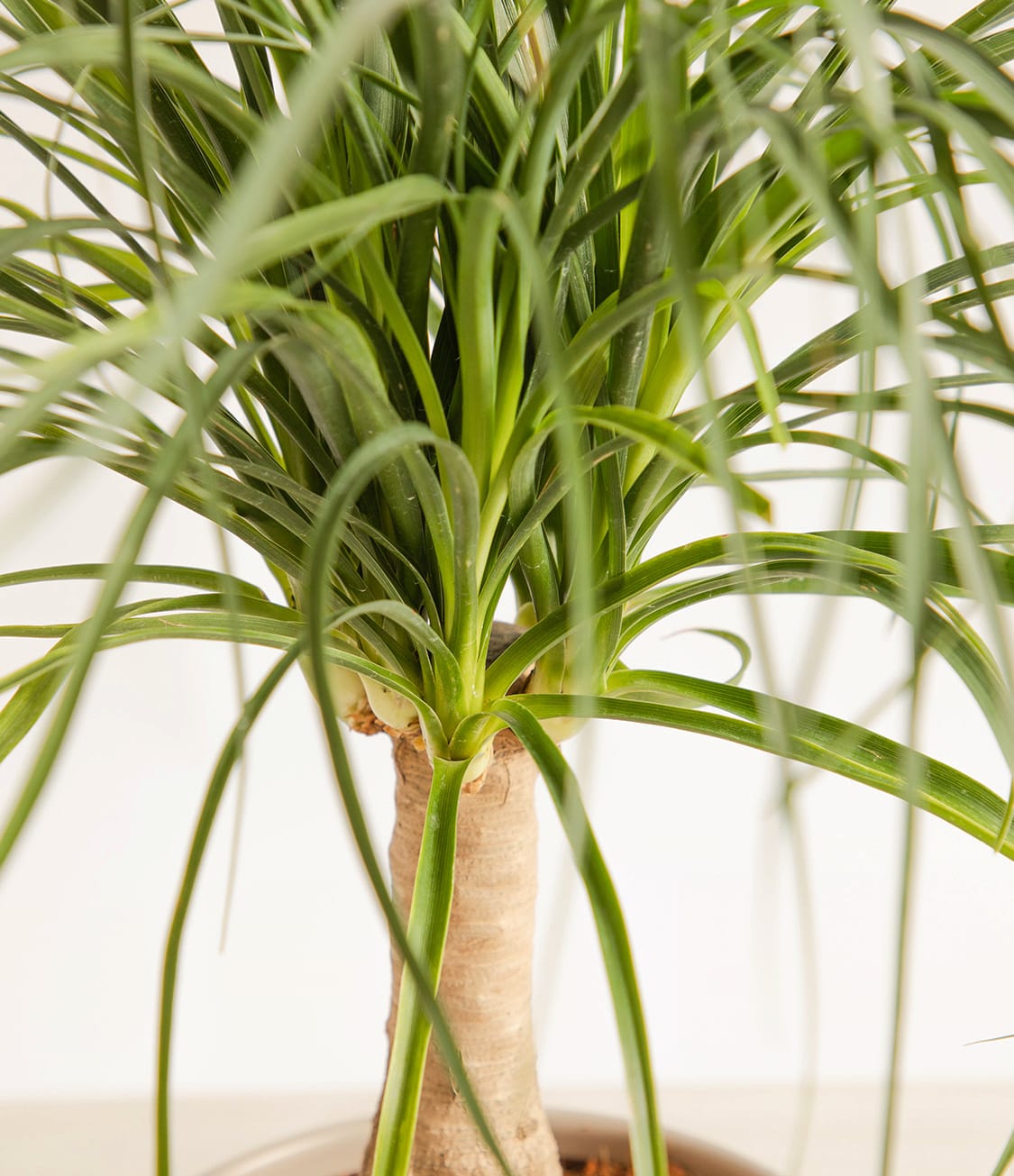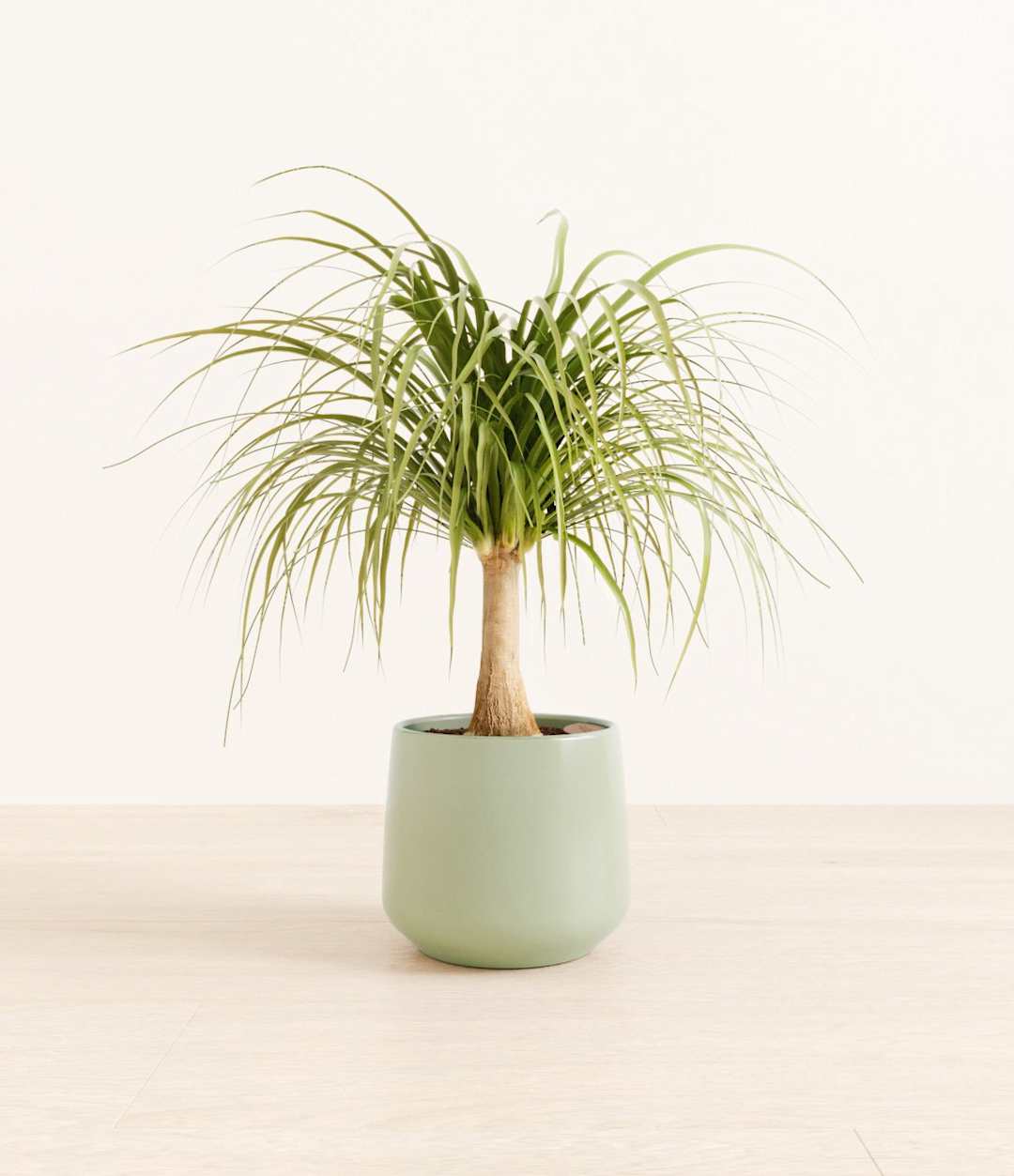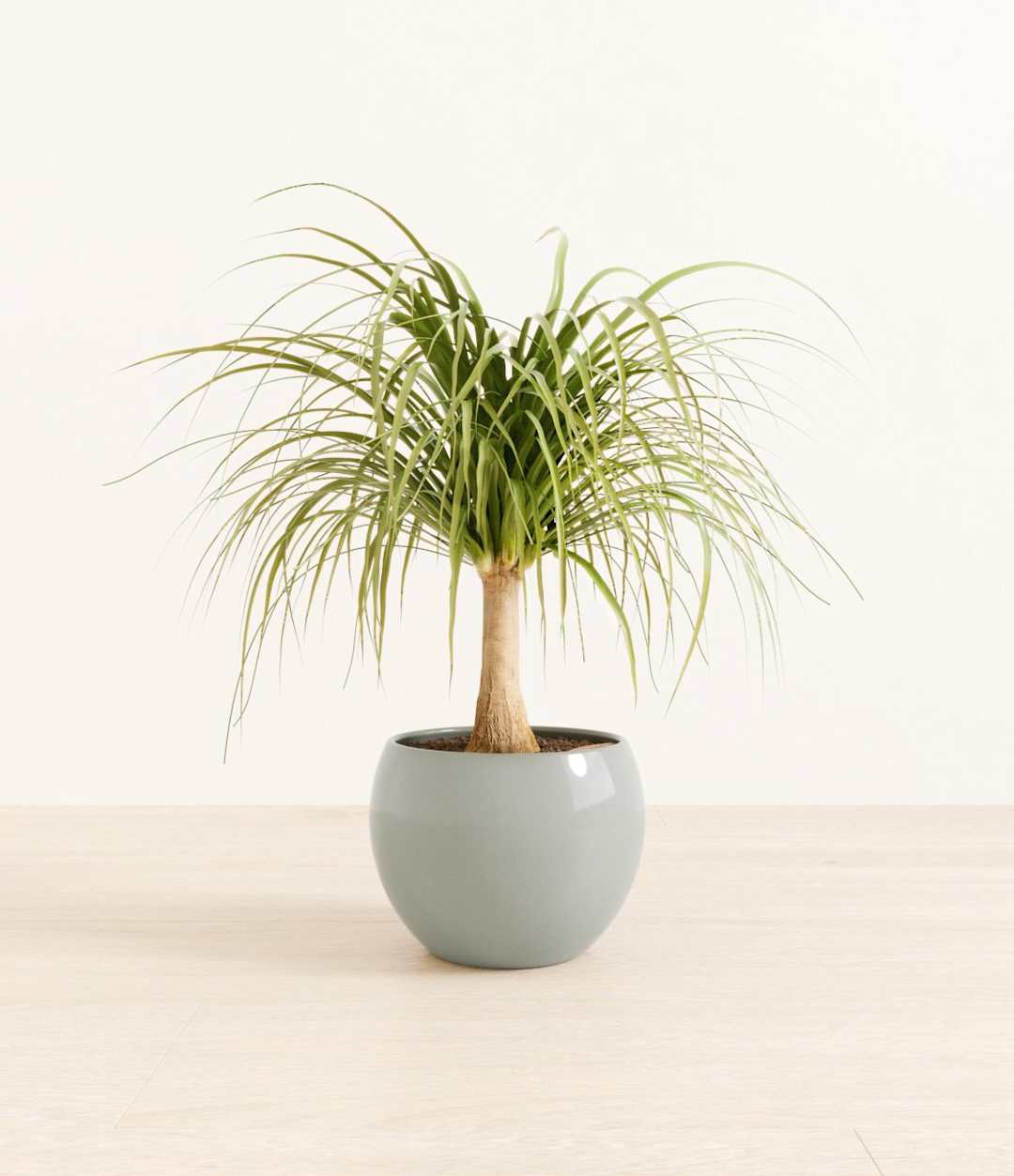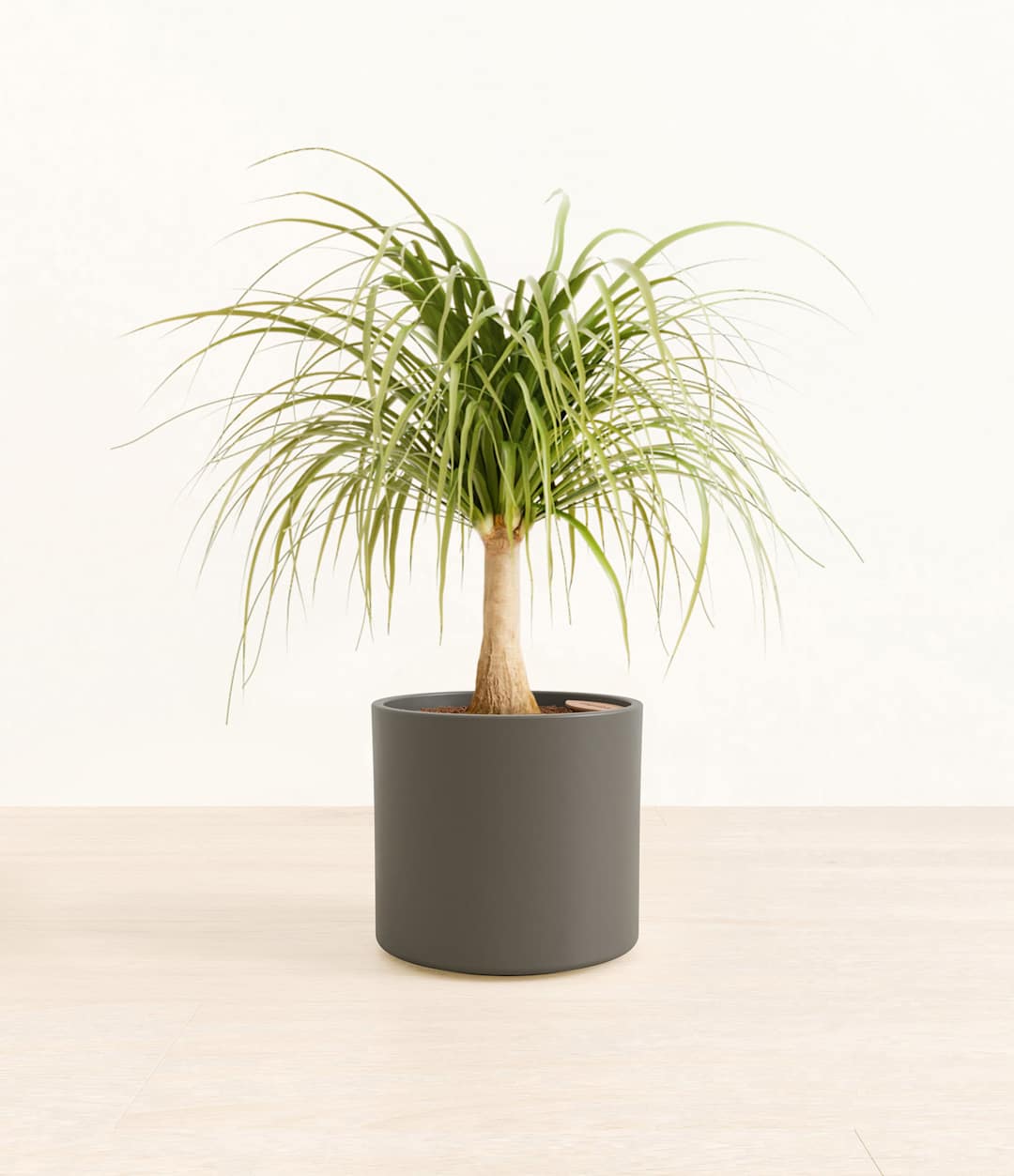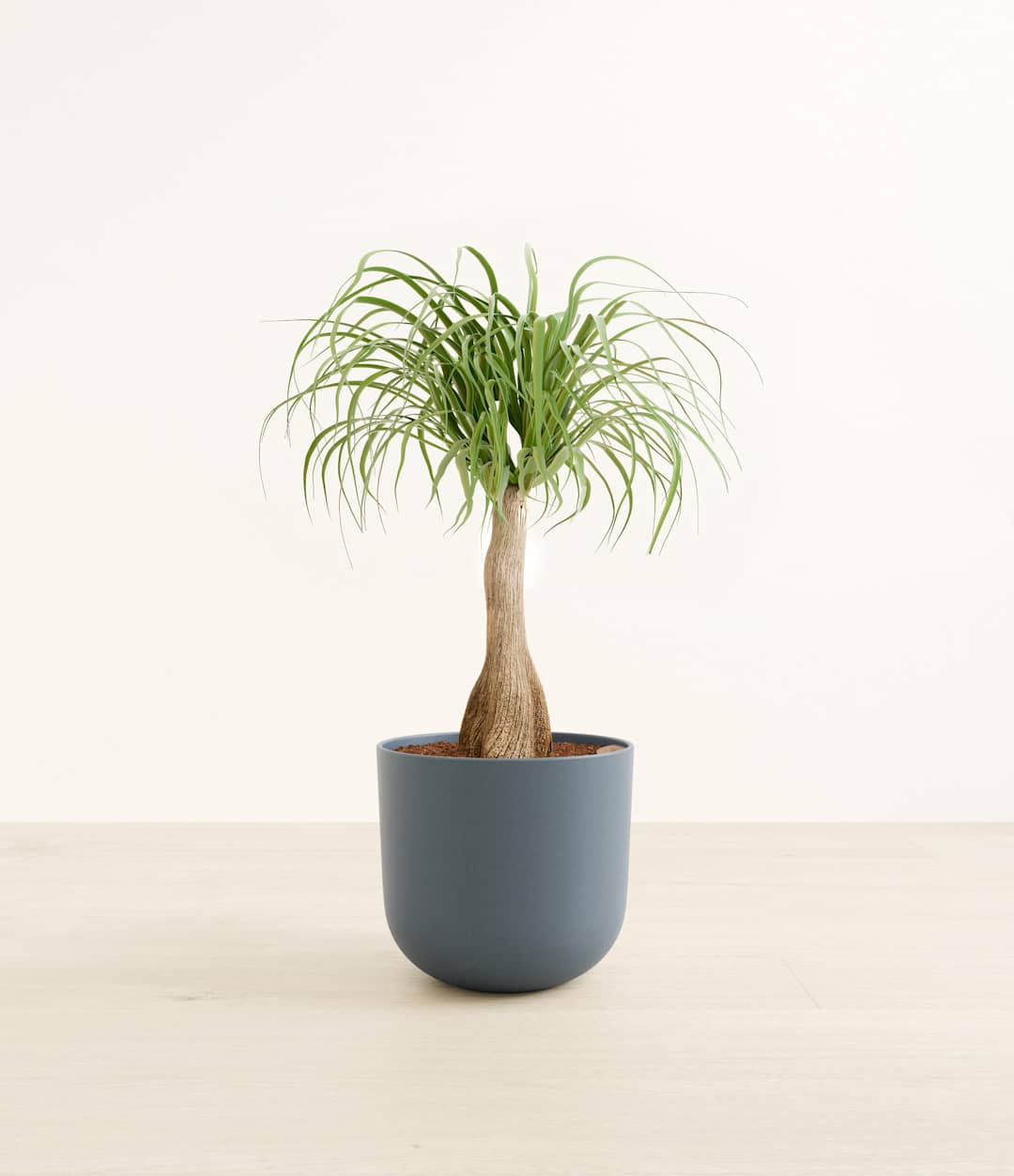Plant care library / Ponytail Palm
How to Care for Ponytail Palm
Shop this plantAbout Ponytail Palm
Native to Mexico, the desert-dwelling Ponytail Palm is gentle and beautiful as it is resilient and easy to keep around. Neither a palm nor a tree, Ponytail Palm is actually a succulent. With its gracefully flowing mane of leaves curving down its hardy trunk, this sun-lover has learned to store water within its base and roots and miraculously thrive under any condition.
Other common names
- Beaucarnea recurvata
- bottle palm
- elephant’s foot
How Often Should I Water My Ponytail Palm?
With easyplant, watering your ponytail palm is simple. Make sure to check the easyplant reservoir once a month and fill it when empty, and you're all set!
If you don't have an easyplant pot, it's best to ensure that your Ponytail Palm is properly watered. Watering should occur no more than once every two weeks during the growing season and let the soil dry fully between them. If any moisture exists in the soil, be sure not to water, or root rot can quickly set in!
Ponytail Palm Light Needs
Ponytail Palm grows best in a space with bright direct light, where the sunlight streams inside directly, and can also adapt to spaces with bright indirect light, where the sun rays are diffused. Avoid placing it in spaces with low light or spaces without natural sunlight.
Ponytail Palm Plant Care
On your Ponytail Palm's first few days at home, it may lose several leaves, or leaves will turn yellow. This is no reason for concern. Simply shake off or cut the leaf, and look forward to new and better-adjusted leaves. Once adjusted, Ponytail Palm is very easy to care for and will reward your love for it by quickly bouncing back from any mishap.
To help it grow optimally and evenly, occasionally dust the leaves and rotate the pot by a ¼ turn once a month. To maintain its aesthetic shape and height, you may periodically prune it to your liking.
How Big Do Ponytail Palm Plants Grow?
Ponytail Palm grows slowly and steadily, with its foliage curving down about one inch wide and two feet long. As it matures, the trunk will grow thicker and its bark more pronounced. If kept indoors, your Ponytail Palm can reach its maximum potential of five feet tall with appropriate direct sunlight for at least eight hours each day and a well-maintained watering schedule.
If allowed to flourish outdoors, especially in its natural habitat of Central America, a ponytail palm can reach up to 30 feet tall. However, if you plant it in a small container and never transplant it into something larger, you'll be able to limit its growth. This easy trick means that even if space is limited at home or office, the beauty of this tropical tree can still be enjoyed!
Temperature & Humidity
The ideal humidity level for a Ponytail palm is 40%, which makes it convenient since the average home sits between 30-50%. Moreover, this plant enjoys temperatures of 60-85°F and should be fertilized twice a year using general houseplant fertilizer.
Are Ponytail Palm Toxic for Pets & Kids?
Ponytail Palm is non-toxic and safe for humans and animals alike. The plants are ideal houseplants as they're completely safe to have around cats, dogs, and other pets. Children can also safely be around Ponytail Palms without worry.
If you've got a green thumb and are looking for an easy-care plant, the Ponytail Palm tree is ideal. With minimal maintenance and care, it will add beauty to any indoor or outdoor living space and be perfectly safe for everyone in the home.
Troubleshooting Common Problems with Ponytail Palm
If you notice the tips of leaves becoming dark, this is normal and no reason for concern. To maintain its aesthetic, you may trim them back with scissors.
Frequently Asked Questions about Ponytail Palm Plant
- What is the lifespan of a ponytail palm?The lifespan of a ponytail palm can vary depending on its environment and care. In ideal conditions, a ponytail palm tree may live for multiple decades. In some cases, ponytail palms have been known to last for over a hundred years.
- How big will a ponytail palm get?Ponytail palms have a slow growth rate, and their size is dependent on the pot and soil type. Generally, they can reach heights of up to 5 feet and may spread as wide as 4 feet. In most cases, they remain significantly smaller when kept in containers indoors. In the wild, ponytail palms may reach up to 30 feet in height. It is essential to consider their mature size when selecting a pot and soil type. It's important not to overcrowd the plant with too small of a pot, as this can stunt its growth.
- Can a ponytail palm take full sun?Ponytail palms are exceptionally well-suited to the dry conditions of most indoor environments and should be placed in a room with abundant light near a window. Ponytail palms can take full sun all day but prefer indirect sunlight.
- How do you take care of a potted ponytail palm?Taking care of a potted ponytail palm is relatively easy. The plant thrives in bright, indirect, or direct light and should be watered no more than once every two weeks during the growing season. It’s important to allow the soil to dry completely between waterings.
